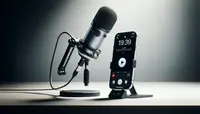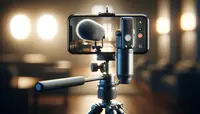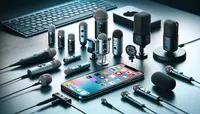4:3 vs 16:9 on iPhones - Which one is better?
I’ve made a comparison so you can choose the best aspect ratio for your iPhone pictures, and not only from a quality point of view.
4:3 aspect ratio is better than 16:9 on iPhones, as the pictures in 4:3 have more pixels and the 16:9 ones are taking more space on the device.
Everyone wants to take the best pictures they can using their phone. If the aspect ratio is only one parameter among many, it is still important to use it properly to improve the quality of your pictures.
The aspect ratio will determine the format of the picture. 4:3 means that the height will be 4/3 (~ 1.33) longer than the width, while 16:9 means the the height will be 16/9 (~ 1.77) longer than the width. Of course, height and width can be swapped depending on the picture's orientation.
There are a few things to know about aspect ratio on iPhones to understand why the 4:3 ratio is the best one, let’s start first with picture quality.
Which aspect ratio has the best picture quality on iPhones?
On iPhones, the camera sensor Apple used is a DSLR with a 4:3 format for every camera available on the iPhone. Most smartphones use the same format for their camera nowadays.
Therefore, an iPhone can’t natively take a picture in a 16:9 aspect ratio but has to take the original 4:3 photo first, and then crop this photo to meet the 16:9 aspect ratio. 16:9 pictures are just cropped versions of the 4:3 ones.
For example, 4:3 pictures taken on iPhone 13 have 3024 pixels in width and 4032 pixels in height, while 16:9 pictures have 2268 pixels in width and 4032 pixels in height. If 4:3 pictures have 12 MP, 16:9 only have 9 MP.
As 4:3 pictures have more pixels than 16:9 ones, 4:3 pictures have better image quality. From an image quality point of view, it’s better to shoot in 4:3 and crop the image afterward if needed
Does 16:9 take less space on the iPhone?
We could think that because pictures taken on iPhones with a 16:9 aspect ratio have fewer pixels and worst quality than the ones with a 4:3 aspect ratio, they take up less space on the device.
It’s usually always the case, the fewer pixels an image has, the less space it takes on the device. But unfortunately, that’s not how the iPhone is dealing with pictures.
First, when you take a photo with your iPhone, the original image in a 4:3 aspect ratio is saved on the device, without any modification applied to it. And then, another version is created, containing all the modifications made to the picture.
By modification, I don’t mean the edit you made afterward, I mean all the modifications you made to the settings on the camera app, including the aspect ratio modification
If you can’t see the two versions on the Photo application of your iPhone, you can see them if you browse your iPhone storage on a computer. The original photo will be named IMG_XXXX while the edited version will be named IMG_EXXXX.
Therefore, pictures taken with a 16:9 aspect almost double the space taken by the picture on the device, compared to the 4:3 aspect ratio.
Is 16:9 better for social media?
Even if pictures taken in a 4:3 ratio are better than the ones taken in 16:9 in both quality and space taken on the device, you might still want to use the 16:9 aspect ratio for social media, depending on how you use them.
One of the most important things to take great pictures is the composition. You need to think about what will appear in your photo, and where will they appear. It’s way harder to do this if you know that you will have to crop the photo afterward.
In some social media, a 16:9 ratio will be preferred as it’s closer to how the picture will appear to your followers. For Instagram stories, for example, you don’t want to use a 4:3 picture as you must crop a lot to fit the story format.
I always prefer to shoot using the 16:9 ratio for pictures I use in any social media story, otherwise, I think the 4:3 aspect ratio is better.
Think about what your picture will be used for to determine which aspect ratio is better for your. If you choose the 16:9 aspect ratio, here is how to keep the setting on iPhones.










Post your comment